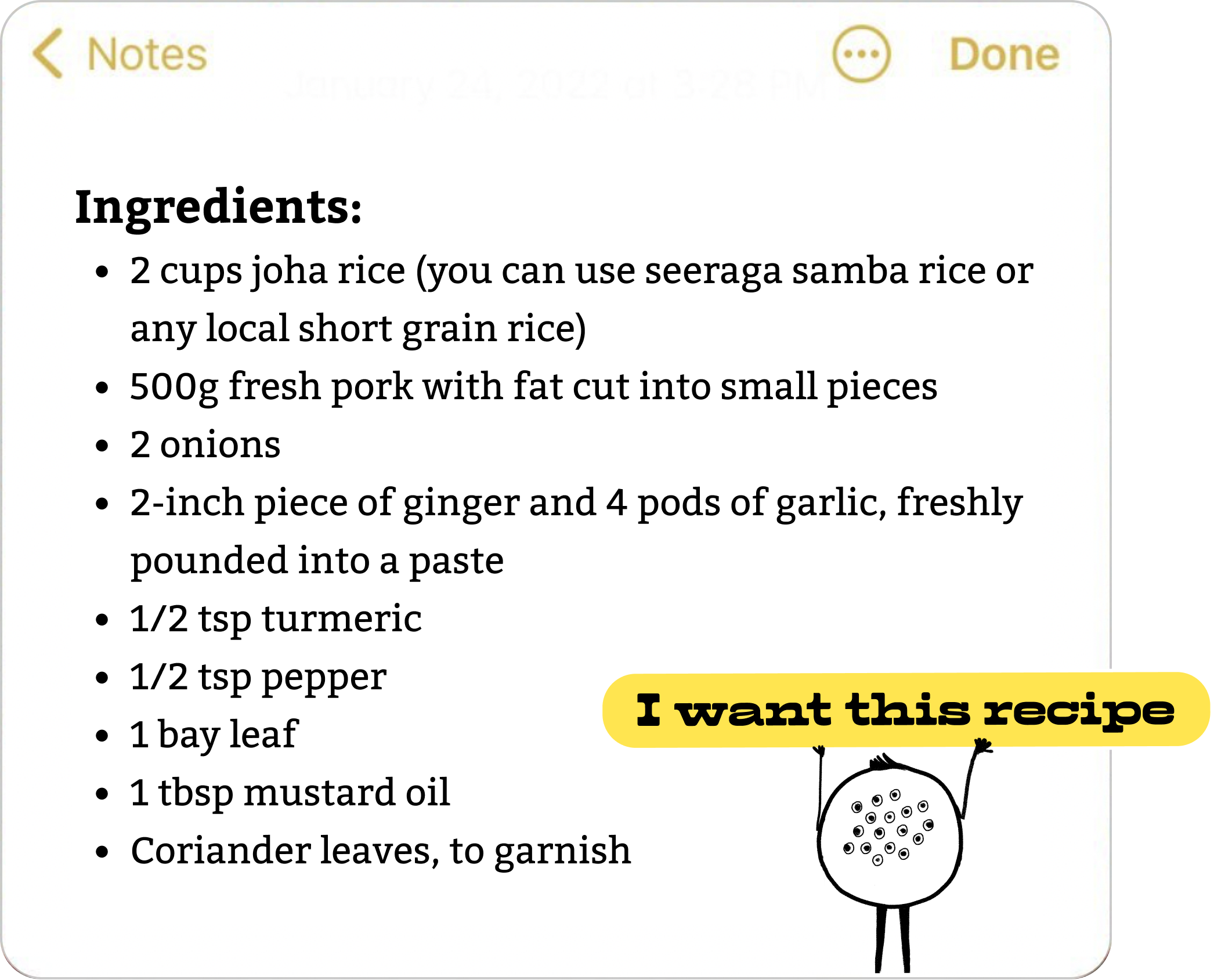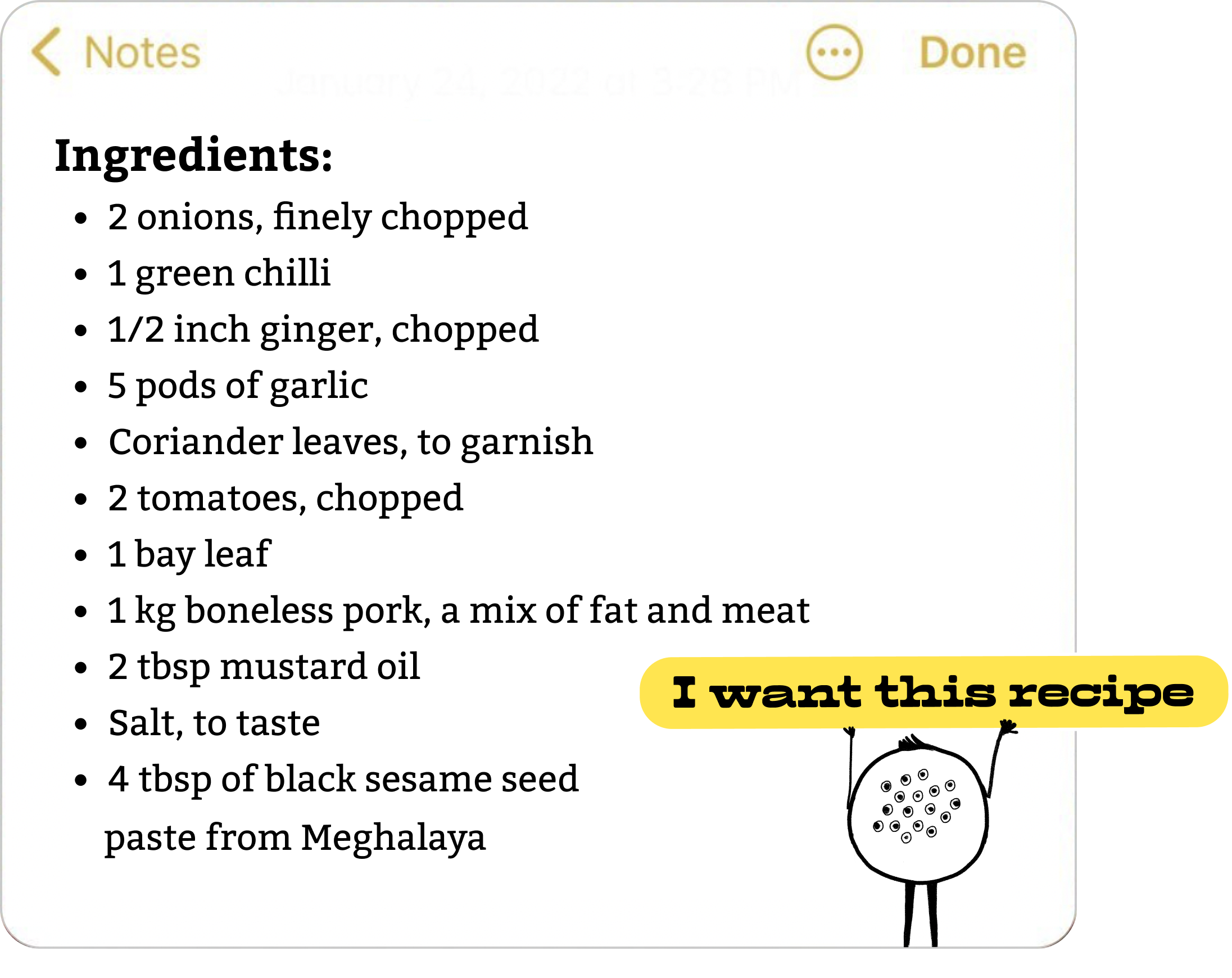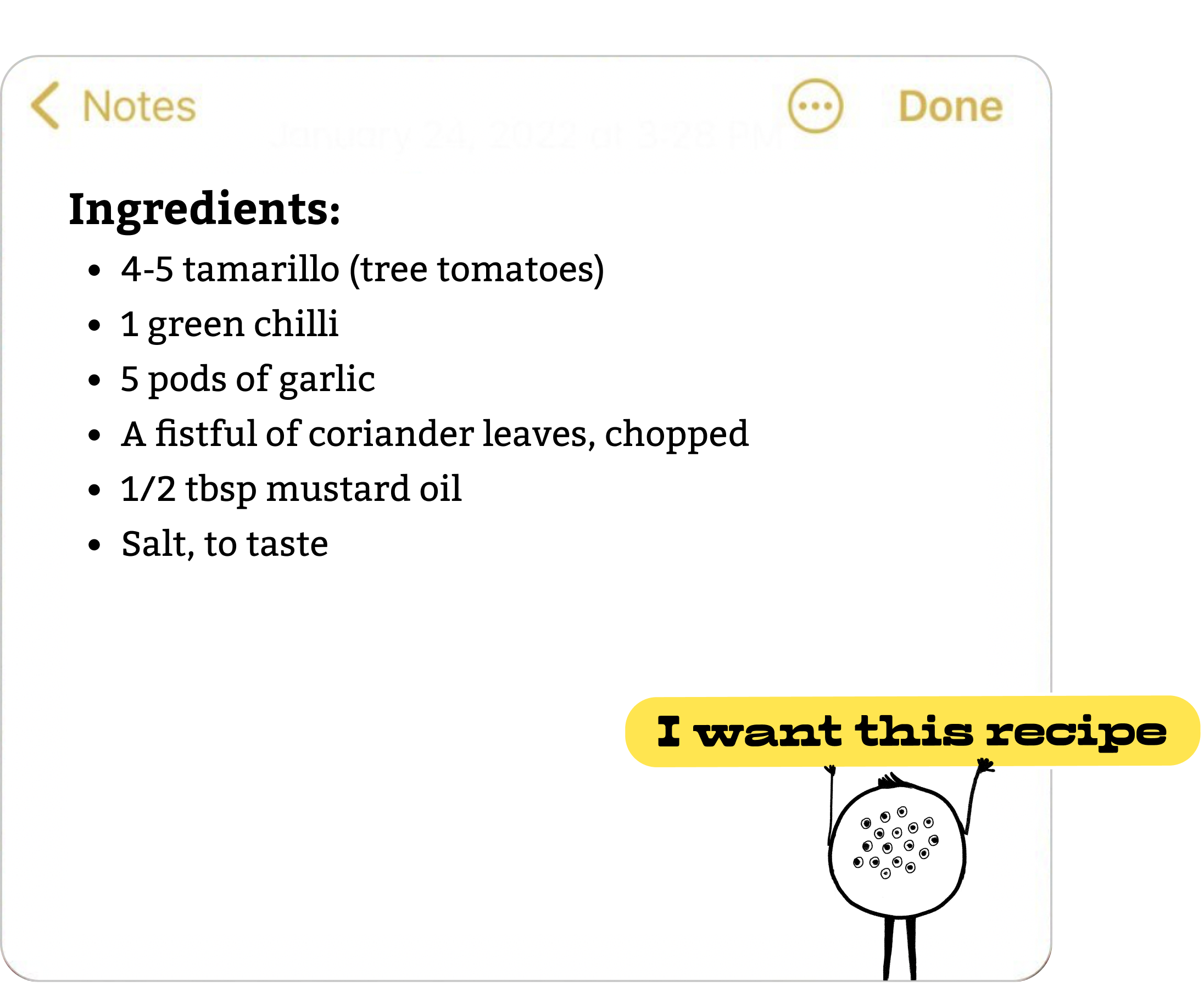Growing up on Khasi food, Pooja Mazumdar recreates some of her favourites for a taste of nostalgia.
Nostalgia is a powerful thing. My very early memories of sharing food during lunch breaks were probably my first and formal introduction to the beautiful cuisine of Meghalaya. I remember waiting for the lunch bell to chime in at 11:45am so we could dive into each other’s tiffin boxes and devour everything in five minutes, tops.
I was always fascinated by how beautiful each lunch box looked – so aesthetic and minimal. In a steel box, you’d have a little rice, some meat (almost always pork), a bit of salad, chutneys (if you are lucky), and sometimes some creative moms would pack dal in repurposed coffee jars (sustainability lesson anyone?).
It didn’t matter to us that the food was cold, sometimes almost frozen in the biting winters of Shillong. The food was so delicious and so different from the food I was used to at home, that I would almost inhale it.
As I grew older, I would frequent the stalls that are omnipresent all over Shillong. They would have a decrepit-looking banner in wood where dukan ja bad (this shop sells tea and rice) would be scribbled in. Walk in for a quick sha (red tea) and have it with pu khlein (fried rice cake) or pu sla (rice cake steamed in a leaf). And if you are hungry, well ja (rice) is always available.
Leaving Shillong has been difficult. For me, it’s always synonymous with home. Although I have been living away from Shillong for 14 years, I carry it in my heart and particularly in my personal recipe book. This recipe book has recipes that have been shared by my dear friends whose lunch boxes I would eat from. So whenever I’m particularly nostalgic I make myself a Khasi meal. I feel like I am transported back in time and the food, the familiar smells in my kitchen feel like a warm hug.
My friends back from Shillong graciously shared recipes with me, and I follow them to cook Khasi food to share it with my family and friends here in Bangalore. Here is a collection of Khasi recipes that will be easy for you to cook in the comfort of your home.
Jadoh (Rice cooked with pork)
Literally translated, ja means rice and doh means meat. So jadoh means rice cooked with meat. Traditionally it is made with unpolished red rice and for an authentic taste, dried chicken blood is added. Don’t turn squeamish yet. Blood is probably the most maligned ingredient in the culinary world, but ironically enough, blood has been one of the oldest ingredients employed by man. It also finds a mention in Homer’s Odyssey, written in the 8th century B.C. But I digress. Here is your cheat version of this recipe.


- Wash the rice and keep it aside.
- Heat mustard oil in a pan.
- Burn the tip of the bay leaves on a flame and immediately drop them in the pan.
- Add the pork pieces and fry for some time until the meat caramelises.
- Add the washed rice and fry for two to three minutes.
- Add salt and ginger garlic paste.
- Add four cups of water and simmer till cooked.
- Garnish with coriander and serve.

Doh Khlieh (pork salad)
This is a salad made with boiled pork and tastes like oink heaven.


- Boil the pork pieces thoroughly in salted water; boil until the pork is cooked, then drain the water.
- Add the freshly chopped onion, ginger, green chilli, and coriander.
- If you are feeling adventurous add a sprinkle of lemon and give it a good toss.
- I like garnishing it with a smidge of mustard oil for an extra zing. Serve cold.

Doh nei iong (Pork cooked with black sesame seeds)
Doh nei iong is my most loved pork dish from Meghalaya. I first tried it at my favourite English teacher’s home. She would pair it with some putharo (rice cakes) and that would be our Christmas lunch.

Note: This sesame has an umami undertone, and is not your regular til. You can get this from Zizira, a brand based out of Meghalaya.

- In a large wok, heat some mustard oil and add bay leaf to it.
- Add onions, ginger, and garlic.
- Add chopped tomatoes and stir until fragrant.
- Add pork and season with salt.
- Cook on a low flame until the pork is tender.
- In another wok, roast 3 to 4 tablespoons of black sesame till fragrant.
- Grind the sesame in a mixer with a little water.
- Once the pork is cooked, add this mix and cook till the oil separates.
- Garnish with some coriander leaves.
Note: This dish can also be made with chicken, but pork tastes way better.

Chutney soh baingon deing (Roasted tomato chutney)


- Flame roast the tree tomatoes until the skin peels off.
- Flame roast the green chilli and garlic.
- In a mortar and pestle, hand-pound the roasted ingredients with salt.
- Add mustard oil and garnish with coriander.
Note: You can also make this with regular tomatoes, but tree tomatoes taste much better.

Sha saw
Tea has become a way for people to connect and express their hospitality. When you visit any Khasi home, you will surely be offered ‘sha saw’ or red tea (still made of black tea leaves). This tea is made without milk and is great to sip on after a meal.


- In a saucepan, add three cups of water and some cut-up ginger.
- Bring it to a boil, add a teaspoon of black tea leaves.
- Let it simmer for two minutes and then strain it.
- Add sugar and voila you are done.

While these are recipes that I have collected from my Khasi friends over the years, I have customised them a little bit since a lot of the local ingredients are available only in Shillong. So if you want the real Khasi fare, I’d highly recommend you book the next flight to Guwahati, take the cab to Shillong, and on the way keep your eyes open for any shop that reads – Dukan Ja Bad and be ready for the best gastronomic experience! As John Rawls rightly said “If you want to judge the quality of a food culture don’t look at its finest restaurants and best food. Look at its low-end. Look to its street carts.” Till such time, I hope these recipes help!

